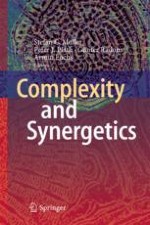2018 | OriginalPaper | Chapter
Design Principle for a Population-Based Model of Epileptic Dynamics
Authors : Gerold Baier, Richard Rosch, Peter Neal Taylor, Yujiang Wang
Published in: Complexity and Synergetics
Publisher: Springer International Publishing
Activate our intelligent search to find suitable subject content or patents.
Select sections of text to find matching patents with Artificial Intelligence. powered by
Select sections of text to find additional relevant content using AI-assisted search. powered by
